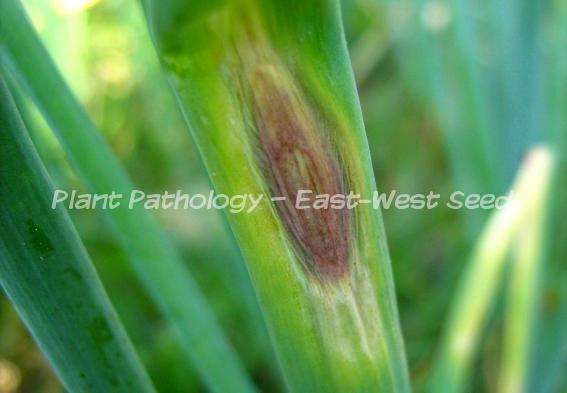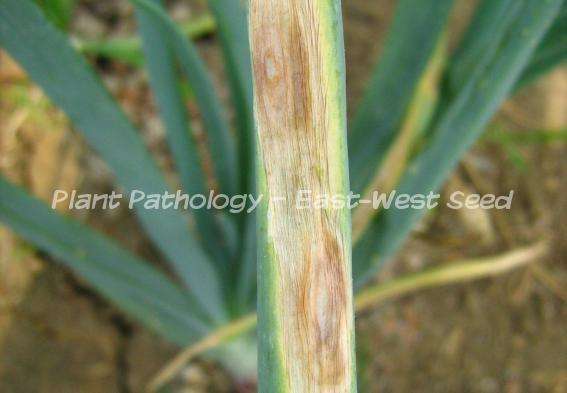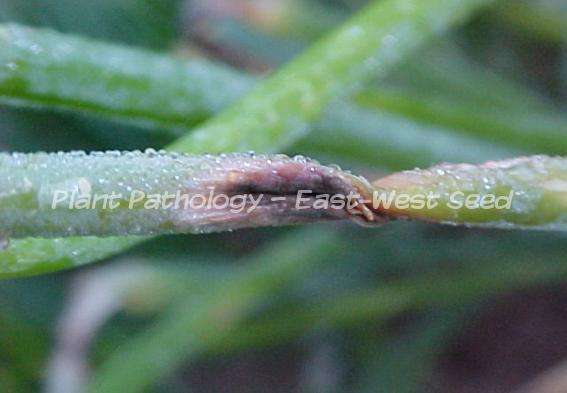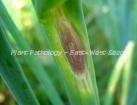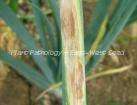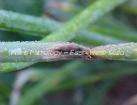Causal Agent:
Fungus (Alternaria porri)
| Characteristic Symptoms: | |
 |
Affected leaves and stem initially have small water-soaked spots. |
 |
The spots will eventually enlarge and turn into purple or brown lesions covered with brown or dark gray spores. |
 |
The fungus usually infects dead or dying leaf tissue. |
 |
Onion leaves become more susceptible as they age. |
 |
Severe infection can cause blighting of leaves. |
| Conditions for Disease Development: | |
 |
The pathogen is soil-borne and survives on plant debris for long periods of time.
|
 |
The disease is severe with prolonged humid conditions.
|
 |
Spores are disseminated by wind and rain splashes.
|
 |
Diseased plants are source of secondary inoculum, which spreads from plant to plant in the field.
|
| Management and Control: | |
 |
Use pathogen-free seed.
|
 |
Remove and destroy infected plants as soon as symptoms are observed to minimize spread of disease.
|
 |
Avoid prolonged moisture to minimize disease severity.
|
 |
Avoid wounding/injuries as this may predispose plants to infection.
|
 |
Crop rotation for 2-3 years may help reduce inoculum level in the soil.
|
 |
Drench nursery beds with fungicides like promocarb hydrochloride (e.g. ProplantⓇ, PrevicureⓇ) or fosetyl aluminum (e.g. AlietteⓇ), metalaxyl+mancozeb (e.g. Ridomil Gold MZ 68 WGⓇ, Apron XL 350 ESⓇ), mancozeb (e.g. Attain M-80Ⓡ, Achem Mancozeb 80 WPⓇ, Micron 80 WOⓇ, VanzebⓇ) to minimize incidence and prevent introduction of disease to the field. |
To view other diseases, click here.
Need more help? Ask the Doctor.



